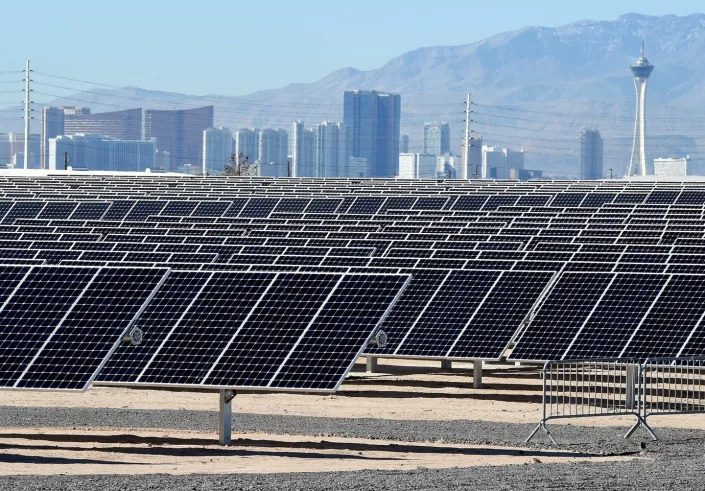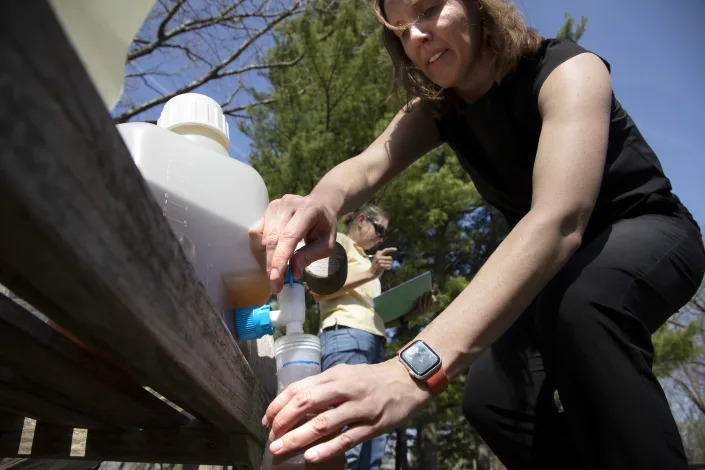Yahoo! News
Russian military moves in the Arctic worry the U.S. and NATO
Melissa Rossi, Contributor – June 10, 2022
In late May, Russian ambassador at large Nikolai Korchunov informed state media that the situation in the Arctic was becoming perilous. He wasn’t referring to melting polar ice due to climate change. Instead, he warned of “a very disturbing trend that is turning the Arctic into an international arena of military operations,” and blamed NATO for expanding its footprint in the region.
“That’s a typical Russian play,” retired Finnish Maj. Gen. Pekka Toveri told Yahoo News. “Western activities in the Arctic have been very mild.” In March, however, NATO held “Exercise Cold Response” in Norway. With 35,000 fighters from 28 countries, it was NATO’s biggest Arctic exercise in 30 years. Yet the alliance, unlike Russia, has no new plans for permanent forces or military bases in the region, Toveri said, while acknowledging that “more patrolling and more exercises have given Russia reason to point the finger and claim the West is the problem.”
Western experts say that Russia, the largest of the eight countries surrounding the Arctic, is behind the militarization in the mineral-rich region, which supplies 20% of Russia’s GDP. For the past decade, the Kremlin has been revamping shuttered Soviet bases, forming a necklace of dozens of defensive outposts (by some counts upwards of 50) from the Barents Sea to territories near Alaska, and building new facilities like the ultra-modern Trefoil, its northernmost base that became fully operational last year. The U.S. and NATO have looked on in consternation as Russia has established a new “Arctic command” and four new Arctic brigades, refurbished airfields and deep-water ports, and keeps launching mock military attacks on Nordic countries in between jamming GPS and radar during NATO exercises. It has also, according to the U.S. State Department, been trying out “novel weapon systems” in the Arctic.
“We’ve seen increased Russian military activity in the Arctic for some time,” a senior State Department official told Yahoo News. However, the situation is ratcheting up, and not just because Russia keeps testing new hypersonic weapons in the Arctic, launching a hypersonic missile there just days after Korchunov made his remarks. Before the year’s end, the State Department official added, Russia plans to launch 19 more tests, including of new weapons. “Seeing Russia’s aggressive and unpredictable behavior, particularly since the Ukraine invasion, has really heightened concerns about Russian activity” in the high north, the official said.
With relations between Moscow and Western governments the iciest in decades due to Russia’s invasion of Ukraine, analysts wonder if the Arctic will become the next powder keg. Russia’s expansion of bases, weapons testing and boosted manpower in the Arctic comes as Finland and Sweden have applied for NATO membership. If accepted, that would further isolate Russia in the Arctic, making it the only non-NATO country in the region, further boosting the chances of unintended incidents, analysts say.
Author of the recently released report “The Militarization of Russian Polar Politics,” Mathieu Boulègue, a research fellow in the Russia and Eurasia Programme at Chatham House, told Yahoo News that his biggest fear is a nuclear mishap in the region.
“If you look at the long list of nuclear assets — whether it is icebreakers, strategic submarines, floating nuclear power plants or spent fuel — there is a lot of risk of nuclear incidents,” he said. “Incidents like this are mitigated in peacetime, when you’re talking to the different stakeholders. But the problem is that we don’t really talk [with] Russia very well these days. So this further increases the risk of miscalculation and errors.”
The Kola Peninsula, for instance, a Kentucky-sized thumb of Russian land abutting Finland, is the most nuclearized place on the planet. The headquarters for Russia’s Northern Fleet, which accounts for two-thirds of Russia’s second-strike maritime nuclear capabilities, the Kola Peninsula marks the entry to the Russian part of the Arctic and holds three military bases and repositories for nuclear arms.
Another third of Russia’s nukes on the sea, however, are located at the far Eastern end of the Arctic, Boulègue added — with Russia’s Pacific Fleet, headquartered in Vladivostok, but some vessels are based in Kamchatka, just across from Alaska. Those facilities could pose future problems for the U.S., Boulègue said, by creating “a flashpoint of tension, should Russia decide to contest American access to the Arctic.”
Ian Williams, deputy director of the Missile Defense Project at the Center for Strategic and International Studies, also points to Wrangel Island — 300 miles from Alaska — where Russia has installed a new air search radar system and may be renovating an airfield, as well as bases in eastern Siberia. “They’ve got plenty of places to put stuff if they want to threaten Alaska,” he noted.
The growing uneasiness about Russian activities in the Arctic, where it is pursuing a new Northern Sea Route made possible by melting ice due to climate change, has motivated the U.S. armed forces to rethink their Arctic strategies. Last year, the Army published “Regaining Arctic Dominance,” its first strategic plan for the far north. This week the Army announced it is activating a new 12,000-troop-strong Arctic airborne division — the first time it has created a new division in 70 years. Troops are training in Alaska, learning to fight in the brutal polar climes — where temperatures can drop to negative 50 degrees Fahrenheit.
The U.S. Navy is conducting Arctic maneuvers with ships and submarines and more — and the Air Force is sending the bulk of its F-35s to Alaska, saying the state “will be home to more advanced fighters than any other location in the world.” Congress approved funding for six new “ice breakers,” ships that can plow through frozen waters. And new satellites meant to enhance polar communications and offer fresh “eyes” on Russia are being launched, along with new radar systems being constructed from Alaska to Denmark.
All of these moves are welcomed by Toveri, who believes that the West cannot appease Putin and expect “to have the peace dividend from the Cold War times.” He added that after the Soviet Union fell, many Nordic countries, including Sweden, shrunk their militaries and slashed spending, while countries such as Denmark, shut down their missile defense radar systems, which they are again rebuilding.
Such moves, however, rankle the Kremlin, which sees them as provocative. Earlier this year, Russian spy planes violated Sweden and Danish airspace. In March 2018 and February 2019, Russian bomber jets targeted Norway’s Globus radar system in mock air attacks, barreling towards the domed structures before abruptly turning back. Russia’s problems with Norway extend far beyond its snooping abilities, however.
The Norwegian archipelago of Svalbard, which lies midway between Russia and Greenland, is a case in point. Beyond Russia’s historical territorial claims to the area, the archipelago is also home to a radar and satellite system capable of tracking ballistic missile paths that is seen as key to NATO communications. Russian politicians occasionally threaten to just snatch the archipelago, like they did with Crimea.
“If there’s going to be a dispute in the Arctic, it will probably be here,” said Williams of CSIS, and the U.S. State Department official underscored that concern.
Timo Koivurova, research professor of the Arctic Centre at Finland’s Lapland University, told Yahoo News he laments that “relations between Russia and the Western states have deteriorated and Cold War thinking has started to prevail.” He wonders if concerns are being overblown, however. “If you are talking with a security-oriented scholar, he might argue that the third world war is coming out of the Arctic. But it’s very difficult for me to imagine that because if you think about Russia’s military objectives in the region, there are not many military drivers for Russia, other than this kind of balancing with NATO.”
Williams likewise sees many parts of the Arctic picture as undecided, including the U.S. military commitment to the region, which is a pricy undertaking.
“Keeping an F-35 operating in the Arctic is a lot more expensive than keeping it operating in Hawaii,” he said. He notes that the U.S. is concerned about Russia’s strong-arming control of the Northern Sea Route, an act that the U.S. believes would violate international maritime law. “The big question is, would we extend ourselves out into that area? Right now, it’s an open question.”
“The last thing Russia needs is a hot war in the Arctic,” Nima Khorrami, research associate at the Arctic Institute, told Yahoo News. “Because if that happened, no one would come in to invest.” And right now Putin, who has stamped the idea of Russia’s Arctic identity into the national psyche, wants Asian investments in the region, he said. Any kind of military showdown, added Khorrami, “and the grand strategy of turning the Northern Sea Route into a new Suez Canal is gone.”

















